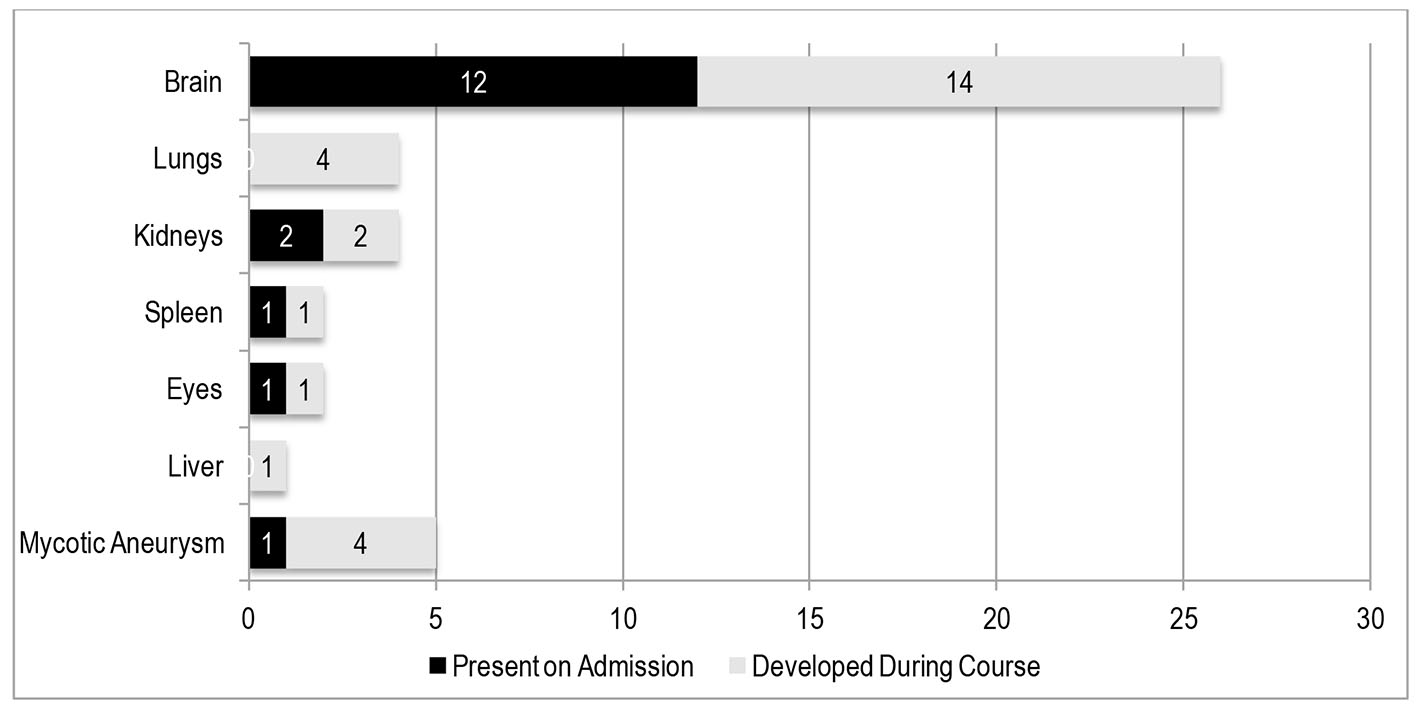| Presence of minor emboli on admission | Any minor embolic events present on admission, before the initiation of antibiotic therapy, such as Janeway lesions, Roth spots, splinter hemorrhages, petechial hemorrhages, and subconjunctival hemorrhage. |
| Presence of major emboli on admission | Any major embolic events present on admission, before the initiation of antibiotic therapy, further defined below. |
| Organism on blood culture | Organism present on at least two sets of blood cultures |
| Presence of atrial fibrillation | Persistent or transient atrial fibrillation documented on 12-lead electrocardiogram or on a cardiac monitor. |
| Length of vegetation | Vegetation length measured in various planes and the maximal length was recorded. For multiple vegetations, the largest length was used for analysis. A vegetation length ≥ 10 mm is considered to be a large vegetation. |
| Area of vegetation | Computed by the longest length multiplied by the widest width of a single vegetation. For multiple vegetations, the individual computed areas were added. An area of ≥ 18 mm2 is considered to be a large vegetation. |
| Ejection fraction | Echocardiographically derived by the Teicholz method. For studies with wall motion abnormalities, the EF derived by Simpson’s method was recorded. |
| Significant valvular regurgitation | Defined as a “severe” regurgitant lesion (e.g., severe MR, severe TR). |
| Location of vegetation | Left-sided vegetations pertain to those located on the left side of the heart, including the MV, AV, endocardium of the LA or LV, or aorta. Right-sided vegetations pertain to those located on the right side, including the TV, PV, endocardium of the RA or RV, or the pulmonary artery. |
| Prosthetic valve vegetation | Includes mechanical or bioprosthetic valves. |

